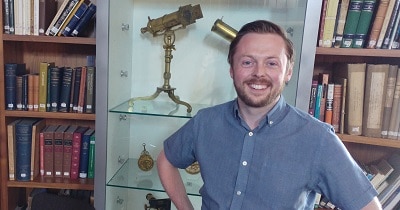
Space, that oh-so-often-quoted final frontier. For many of us, the closest we’ll get to the great beyond up above our atmosphere rests firmly within the world of science fiction. The super-hyped, recently released No Man’s Sky went one step further than most space-based games have gone before, offering up a near-infinite, procedurally generated universe of planets, each with their own unique flora, fauna and underlying periodic table to explore and exploit.
The game’s algorithmic generation has a clearly defined set of rules. But does it follow any real-world scientific rules or knowledge to populate its vast digital universe?
I turned to the Royal Observatory Greenwich’s astronomer Brendan Owens for answers. With a degree in Physics and Astronomy and a masters in Science Communication, Brendan was able to shed some interstellar light on just how much science fact there is to accompany No Man’s Sky’s science fiction.
As a keen gamer himself (he knows his way around an Elite Dangerous: Arena wienerpit) we put a PS4 controller in Brendan’s hands and blasted off into Hello Games’ digital cosmos.
Planets as Biomes

Every player starts No Man’s Sky on the surface of a random planet, and must repair their ship before shooting off into space. While every planet is unique, they do share at least one common feature – they’re all biomes, meaning they have a single climate and ecosystem from one pole to the other, right around the world. While you can make such things in a controlled environment (like those closed goldfish bowl mini gardens), they just can’t exist on a planetary scale.
“Planet-sized biomes aren’t possible,” confirmed Brendan.
“In our own solar system we have very extreme places, like Uranus which sits on its side, and one side of the planet will seasonally experience permanent darkness, the other permanent light, with a very cold spring and autumn in between. That makes a big difference. So we would expect at the very least to see at the poles of these planets, depending on their tilt, an area of ice. It wouldn’t necessarily have to be water ice, it could be frozen carbon dioxide.
“To have a completely homogenous world would be very odd. Even somewhere like Mars – we’re familiar with it as “the red planet”, but there are lots of ice deposits and cool lava basalt rock”.
Resources, Elements, and Heavy Metal(s)
As much a survival game as it is a Star Wars simulator, you’ll have to pick up plenty of resources with which to craft new tools and ship parts in No Man’s Sky. The game uses a fictionalized Periodic Table to explain away its madcap fuel systems and lasers, but also mixes in some real elements like plutonium and carbon too. However, where it does take creative license with the elements, it does so with a nod to real-world science, and even the in-jokes of the scientific community...and metalheads.
“You know [the recently deceased] Lemmy, from Motorhead?”, Brendan begins, “with No Man Sky’s fictional Lemmium element, there is actually a current campaign to name a new element (I think it’s element 115), a newly discovered heavy metal, after him. The International Union for Pure and Applied Chemistry will actually be having a look at that as a serious candidate, so that’s a cool little easter egg.”
Sky Color and Sunset
No Man’s Sky was birthed, in part, by Hello Games founder Sean Murray’s love of old science-fiction novels, and their imaginative, colorful cover art in particular. The vibrant color palette extends not just to the plant and wildlife though, but to the colors of the sky. Though the precise configurations seen in No Man’s Sky raise eyebrows, Brendan explains that rainbow sky colors aren’t necessarily impossible.
“The color of the sky strikes me as quite interesting,” notes Brendan.

“Some places, like Mars, have a sunset that’s a blueish hue, and the normal daytime sky is a dusky red-orange. Different colors are dependent on the particles in the atmosphere. White light comes from the sun, and different particles in the atmosphere will preferentially scatter different wavelengths of light, leading to different colors. So on Earth we get a preferential scattering for blue. Depending on the size of the particles, you could end up with different colors on different planets.”
Gravity, Evolution, and Alien Wildlife
It’s when you start exploring the surface of No Man’s Sky’s planets that the game really starts to come into its own though. Just as the universe itself is randomly generated, so is its wildlife, using voxel building blocks and another algorithm injection to ensure each planet’s animals are unique. And, as you’d imagine, they get pretty weird. Too weird to exist? I directed Brendan to a planet with what we guesstimated to be three Earth masses in size. Did its creatures appear as he expected they would? Brendan gave this chap a quick examination:
“I can visualize a planet that’s high mass – it wouldn’t necessarily have to be very big but it would need to be very dense – and the surface gravity would be very strong and that would lead to lifeforms that couldn’t actually get above a certain height,” explains Brendan.
“They’d have to build up an incredibly strong bone structure, that evolved that way to deal with their environment.
“If we land on a planet three times the size of Earth, its creatures would evolve to the planet that they’re on. Externally you might not be able to see just how strong they are, in terms of things like bone density. There have been research experiments on the International Space Station recently to look at what it’s like to live in a micro-gravity environment, where your bone density weakens. So astronauts on the ISS are experimenting with tools that are actually used on Earth for arthritis, looking at how to combat that loss in bone mass.
“But I can’t see why an animal would evolve on a high-mass planet with very strong front legs and very weak back ones! Some form of autopsy on one of No Man’s Sky’s creatures would help immensely!”
Flying Creatures
Just as bipedal and quadrupedal animals undergo unusual stresses on a high-mass planet, so too would flying creatures need to evolve in such a way so as to be able to soar the interplanetary skies.
“On a planet three times the size of Earth, it’d still be all down to how a flying creature might evolve. Perhaps stronger muscles for flying creatures would be required,” says Brendan.
“More so than the gravitational pull, the density of the air would play a role. For instance on Mars there is a far less dense atmosphere – if you were to land with a parachute you’d need a much larger surface area in the canopy than you’d require here on Earth. So many of the rovers that have landed on Mars have required an extra system to safely land – for instance the rover back in 2012 had a winch system to lower it down. So, should a planet in No Man’s Sky have a less dense atmosphere, you’d expect that any flying creatures would need to evolve to have much larger wings to provide enough lift for them to stay airborne.”
With many of the flying creatures of No Man’s Sky being relatively close analogues to known Earth creatures, we’re going to have to assume then that either a) all the planets have an atmosphere relatively close to our own (which is unlikely given the other atmospheric details we’ve extrapolated already), or b) No Man’s Sky’s flying creatures are from the R Kelly school of belief in flight.
Flora and Plant Colors
For every colorful sunset or randomly generated dick-monster in No Man’s Sky, there’s a wondrous, randomly formed plant too. There’s a reason so much plant life on Earth is green, and it’s a rule that can explain the full spectrum of leaves seen in No Man’s Sky, too – if not the way rainbow colored plants can appear side-by-side on the same planet.
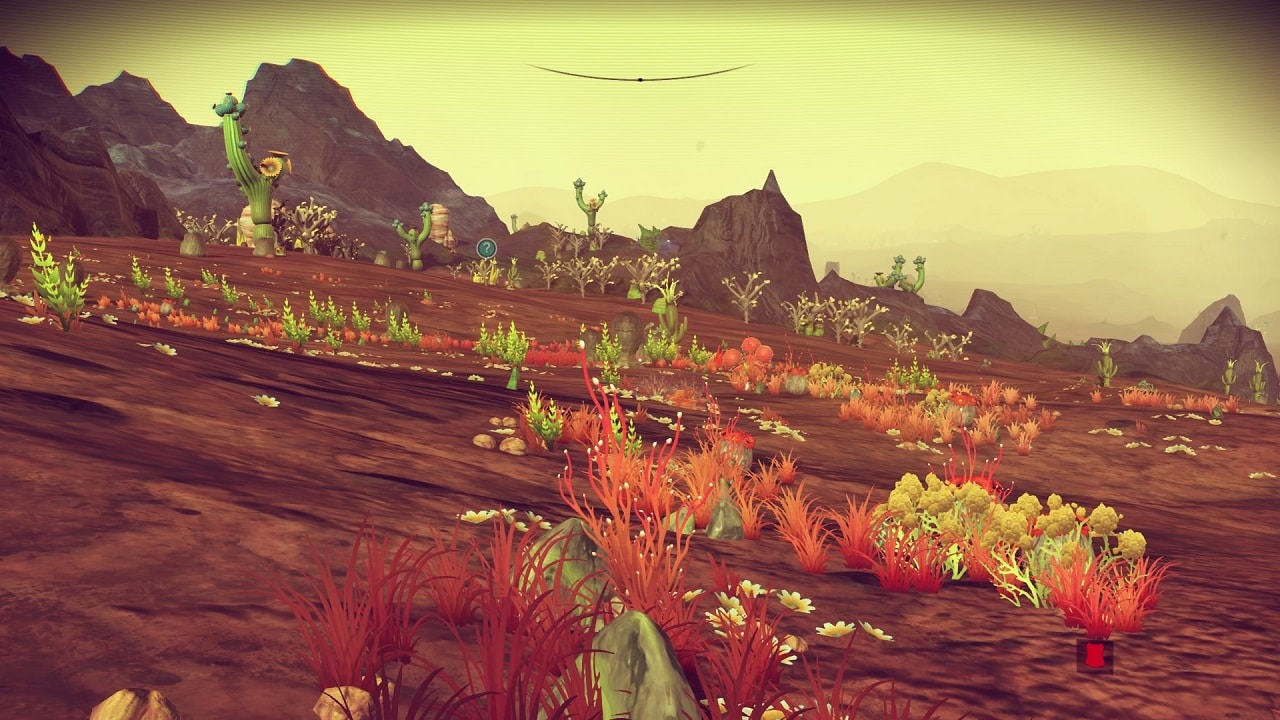
“There’s quite a variety in the leaf color in No Man’s Sky,” spotted Brendan.
“If we consider photosynthesis and chlorophyll – what we’re used to here – when you see the colors in plant life they’re showing you the wavelengths in light and the energies that are rejected by the plants. So all other colors are being absorbed. So the colors in No Man’s Sky flora can tell you what part of the spectrum they’re using to fuel that particular plant life. What we’re seeing on this current No Man’s Sky planet seems like quite a concoction, and doesn’t seem to be playing to a known scientific rule system in terms of its plant life or a fixed star with wavelengths being preferentially scattered.”
Night Cycle
What’s an open-world (nay, open-universe) game without a night cycle? No Man’s Sky has a relatively complex one, tracking deadly temperature drops and increases as the sun sets and rises. But for that smart detail, it takes liberties elsewhere.
“Night falls in No Man’s Sky very, very quickly,” Brendan points out.
“That would indicate that a planet was spinning at quite a high rate. But the stars in the sky are apparently moving very slowly, so that doesn’t really fit. There’s a reasonably fast rotation on show, but here on Earth for every four minutes that pass there’s a degree change in position in the sky.
“Given the unusual multiple sky colors during the day, I might have expected more of a rainbow-like sunset as well. But it went this very deep blue very quickly. It’s interesting that the sky seems to have some sort of emission in it – it could be cloud cover but it looks like it’s being illuminated from within, which looks more like a nebula, or perhaps there could be a moon behind it.”
Space Storms
You’ve evaded carnivorous crocodile dogs, topped up your exosuit with plutonium reserves and even bartered with an alien. And then a solar storm hits, and they can be particularly vicious for the unprepared in No Man’s Sky. You’ll need more than an umbrella to survive extreme temperature drops and acid rain, but would they be possible out there in real alien worlds?
“The change in weather in No Man’s Sky can be very dramatic it seems,” says Brendan.
“The way the temperature can ramp up when a storm hits could be partially explained if you added a lot more atmosphere. Venus for instance could rocket up to 450 degrees celsius. It’s like a runaway greenhouse effect but in No Man’s Sky I’m not sure of what could happen to create such a massive heat increase.
“To go from subzero to that heat would I think technically be impossible within that timeframe, outside of a dramatic sudden pressure change. If you compress a gas in a cylinder very quickly it heats up, for instance. But that would result potentially in some sort of explosion or crushing sensation. You’d need a very sturdy space suit to survive that.”
Those with the patience to mine down deep into a real planet would be able to observe some details that could equally influence weather systems back up on the surface.
“The geological activity towards a planet’s core can have interesting effects on temperature and storms,” says Brendan.
“If the core is spinning, then you can have a strong magnetic field generated, if the core is not spinning, you’ll have next to no magnetic field. With weak-to-no magnetic field, and no fluid rotating around a solid core, you’d have very little protection from radiation. We’re lucky enough to have a strong magnetic field, that protects us from solar storms. In those conditions, you could have what we know as the Northern and Southern Lights all over the globe. Which would be beautiful, but it’d generate a lot of ground current...which could be dangerous…”
Ship Design and the Realities of Space Flight
Since Luke Skywalker dived down into the Death Star’s trenches, it’s been the dream of a generation to fly their own spaceship. No Man’s Sky’s algorithm extends to even its ship designs, from boxy craft to slick X-Wing lookalikes.
But, as humanity’s own relatively tentative steps into Earth have proved, it’s incredibly hard to even get out into space, let alone survive out their. Brendan cast a critical eye over my No Man’s Sky ship of choice:

“To leave Earth’s atmosphere, you need an escape velocity of 20,000mph,” explains Brendan.
“The No Man’s Sky planet we’re exploring seems to have three Earth masses; I’d have to double check but we can extrapolate we’d need to hit 60,000mph here. But it’d certainly be a higher escape velocity to break free of this planet’s gravity compared to Earth. Looking at the ship we have here, it looks similar in some ways to existing Earth aircraft with vertical takeoff systems, so if it’s thrusters were able to direct downwards and generate huge amounts of energy, maybe we could take off.”
One problem that No Man’s Sky explains away with its fictional elements and “Warp Drive” systems is the ability to travel great distances without huge volumes of fuel. When it comes to humanity’s real adventures in space, fuel storage is a major issue, one even more difficult to master than even No Man’s Sky’s needy inventory management.
“Normally you’d need a rocket launch to reach space, and they’re mostly huge and filled with fuel, towers of fuel with a small capsule on top requiring multi-stage separation,” says Brendan.
“So we’re assuming here we’ve got some technology that reaches high velocity very quickly, with fuel stored in a very small area compared to what we’d need. There was a lot of experimentation with rocket technology – you’ve got a controlled ignition, an explosion, inside a chamber, and a pressure increase, and you’re letting the gas escape out of one nozzle area to control that as best as possible to create a steady, high-velocity expulsion of gas.”
The overall ship shape isn’t exactly...shipshape either. Those fancy folded wings and squared-off wienerpits may look the part in a screenshot, but they’re more likely a hindrance than an aid to staying airborne.
“Aerodynamically, the design we have here is probably not suitable either,” explains Brendan.
“You’re going to need enough air flowing over the wing at high velocity to give you the low pressure on top and high pressure underneath to produce lift you can maintain. You’d need something with bigger wings.”
No Man’s Sky does a good job though of replicating the stresses that would be put on a spaceship as it entered a planet’s atmosphere, recreating the intense build up of heat through the glowing wienerpit window.
“You definitely would have to make sure that you have a very good thermal protection system around the ship. In a normal Earth atmosphere you have to withstand temperatures up to 1,300 degrees celsius, rising up to around 1,600 degrees celsius when you have that rapid reentry. So you look for materials to use in in your spacecraft that are very poor conducts and very good radiators, to radiate away the heat very quickly. A lot of thermal insulation that was used in space shuttles was mostly air and silicate fibers. So No Man’s Sky indicate that it’s was very hot outside during re-entry. That came through.”
The Practicalities of a Space Dog Fight
Even with the creative liberties Hello Games takes with getting its spaceships off the ground, it’s a whole other problem making any space-bound ship capable of duking it out in a space-based dogfight. Without gravity to anchor you, even the slightest movement becomes a complex series of compromises, and weapon systems add headaches all of their own.
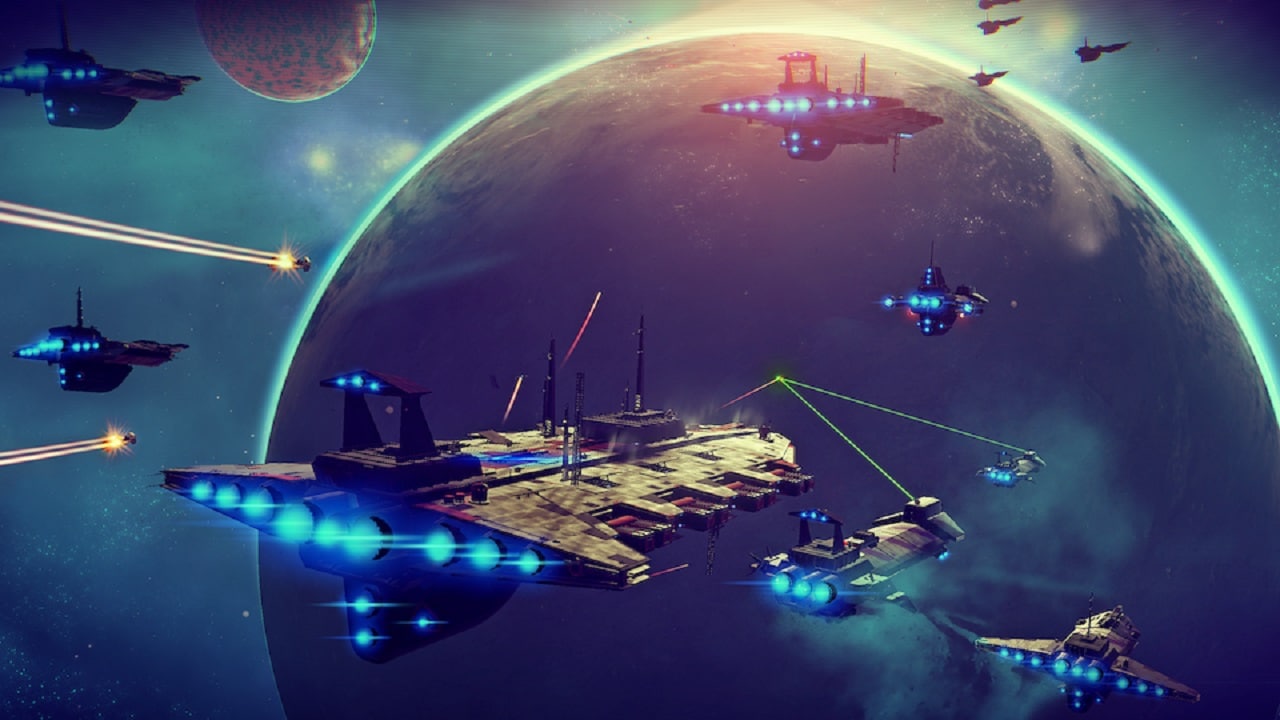
“To have the level of maneuverability needed to perform a dogfight, you’d want thrusters on both the front and rear of your craft”, describes Brendan.
“Every time you fire a weapon that’s a projectile, you’ll undergo Newton’s Second Law – for every action, an equal reaction. So a projectile launch, without some sort of compensation system, would mean you’re going to fire yourself away.”
But some works of science fiction have addressed this issue, and current computing tech and sensor arrays may mean space battles need not necessarily be confined to the cinema screen.
“The sci-fi series Babylon 5 really got this concept,” continues Brendan, “and had perhaps the best fictional use of inertia I’ve seen – the spacecraft there were in a configuration where you’d have thrusters both on front and rear and would have to compensate, as it wouldn’t slow down automatically, firing thrusters in the opposite direction to the projectile launch.
“So it’d be highly complicated to have a space dogfight – you’re having to compensate for every thrust you want to make to keep balance, but also compensating for your weapon fire. Taking it in the sci-fi realm, you’d assume they have fantastic computational and processing power to calculate all the minute thrusts needed here. That said, we’ve probably got the means to create such a computer system now in fact.”
Space Debris and Asteroid Belts
We’ve got quite the circle of junk orbiting Earth, but that’s the price you pay as a spacefaring civilization that still struggles to sort its weekly domestic recycling out. However, pretty much every planet in No Man’s Sky has its own asteroid field surrounding it. How close is that to our understanding of the real universe?
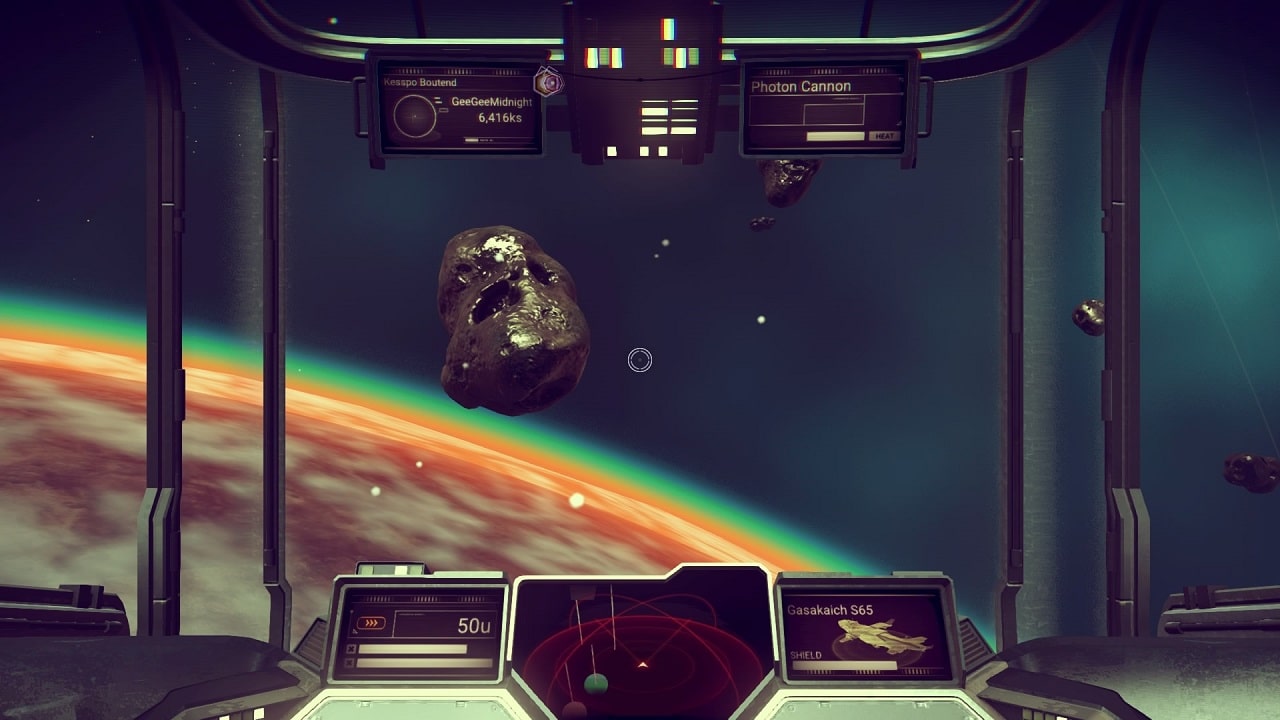
“It could be true enough for each planet to have a debris field – all planetary systems start off in a spinning disc of debris,” notes Brendan.
“It starts off very small, and bits of the heavy elements (the metals and the rock) stick together – gravity doesn’t attract them together because they’re not massive enough. Once they stick together, they begin to build up a high enough mass to attract other bodies. You then have a series of collisions where some planets may be obliterated, and a large world may reform into another world. So you’d expect debris if you were around a relatively young planetary system, with lots of planetary pieces that may have yet to become moons for instance. The planet itself would give you an idea of the history – if it has many craters, then you’d be able to tell if it’s been pounded by debris over millions of years.”
So, was that how our own moon was formed?
“The theory around our moon with the strongest evidence,” explains Brendan, “suggests something around the size of Mars smashed into proto-Earth. That likely carved off a piece of our own world (with the object that did the carving either continuing on into the outer solar system or being picked up by our gravitational pull and remaining in orbit), and broke off bits of itself. And those fragments came together to create our moon. That’s called the Giant Impact hypothesis.”
However, writers of histrionic “apocalypse” headlines and movie scripts would do well to learn the differences between meteorites, meteors and meteoroids.
“We call them a meteoroid in space, a meteor as it travels through our sky, and it’s only once it hits the Earth do we call it a meteorite,” clarifies Brendan. “A meteoroid is a bit flaky as it’s actually a small chunk of an asteroid, and there’s not a strict limit to that size.”
It’s a lesson the No Man’s Sky team could learn, too.
“What’s interesting about No Man’s Sky’s meteoroids is that they actually look more like meteorites that have withstood a lot of friction in our atmosphere, and pressure. That causes the gases around the meteor to glow, and that leads to ablation, as if you had lots of little blowtorches pointed at the original meteoroid. So it seems like the developers have looked at meteorites we have that have reached Earth, but not perhaps the make up of meteoroids before they enter our atmosphere. But the configurations look right – we look at the reflectivity of objects in space to get an idea of their composition. We know metals are shiny, that rocks aren’t so shiny, and these meteoroids seem to adhere to that.”
You wouldn’t be able to come in for a landing as sharply as No Man’s Sky allows, though. To sharp and any known method of creating a spacecraft would see the ship put under too great a stress and break up. Conversely, too shallow an entry and the ship would bounce off the atmosphere, which No Man’s Sky, knowingly or otherwise, does replicate.
Laser Weapons
The laser is a mainstay of science fiction. Many an alien has been incinerated by them, even if it’d take a whole battalion of Stormtroopers to land a shot on a target the size of a house. The reality as it stands however is that, though lasers have the potential to inflict some quite painful damage, they’re nowhere near powerful enough to pull off the explosive feats they manage in No Man’s Sky.
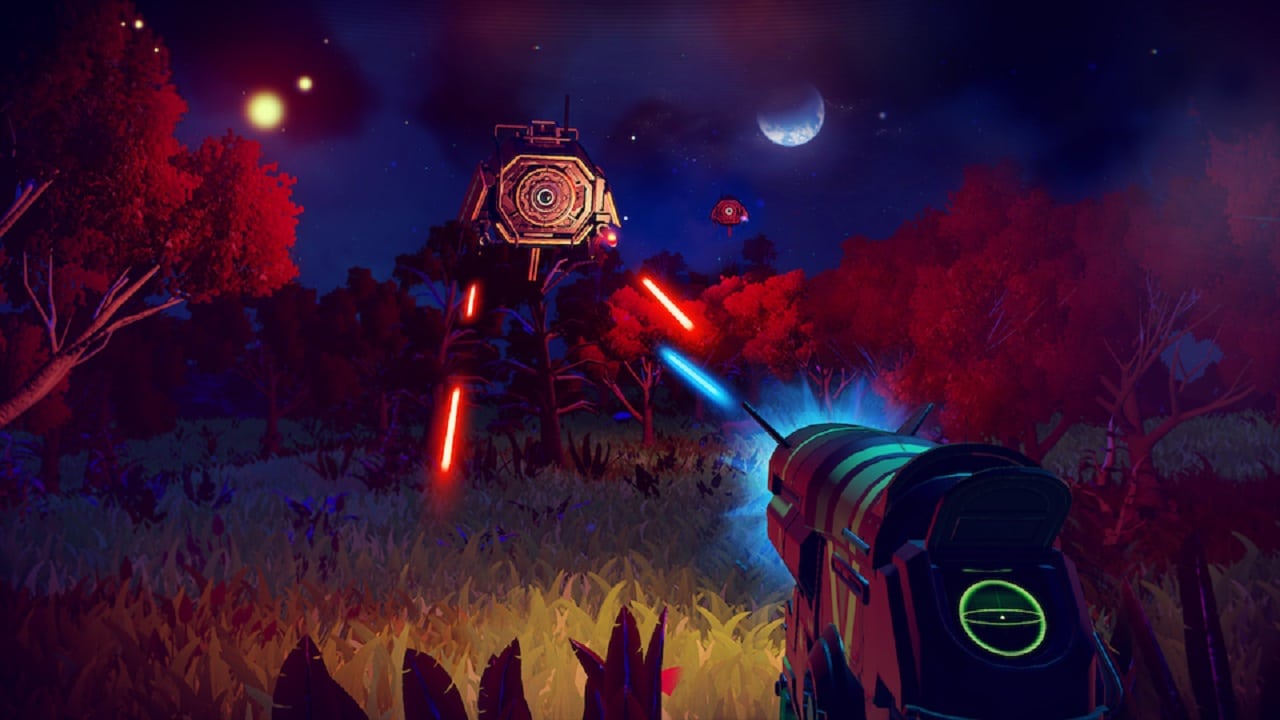
“There’s no way a laser could blow up an asteroid in space. Not to do as much damage as seen in No Man’s Sky at least!” laughs Brendan.
“All lasers are monochromatic light. You take a particular frequency, or wavelength of light. So a green laser would be a specific nanometer that’s used. Lasers have been created in a defensive capacity that are of intense enough heat or wattage to burn through things. So you could do that, but to cause something to explode is a different matter. A laser beam could ablate an asteroid, or maybe slowly, continuously excavate a vaporized material to drive an asteroid of course in a Bruce Willis/Armageddon scenario. You could get lucky if gases were trapped in the asteroid and, if you heated it, it’s under pressure, you could cause it to fracture. Which may result in something a little more explosive!”
Long Distance Space Travel and Warp Drives
NASA’s Voyager 1 has the illustrious title of being the spacecraft to have travelled the farthest from Earth at an amazing 135 astronomical units away in distance (one astronomical unit being the distance between the Earth and our Sun, approximately 93 million miles). That’s tens of billions of kilometers. But it’s unmanned. What would it take to pull off No Man’s Sky’s long-distance space travel (providing we’d solved some sort of cryo-sleep, of course).
“You could use ion drive engines which are in development,” Brendan described.
“That is when you have a gas on board, like xenon gas, something that is a high-mass gas. When it’s propelled or expelled at one side the reaction force is as strong as you can have. What happens is you strip off electrons from the atoms of the gas like xenon and then you electrically propel what remains of your positively charged ions and you propel them out of the thruster, and you get forward motion. The great thing is that if it’s from a gas, and say if you have solar panels to do the accelerating of the ions, then you have a very low mass fuel with you so you can take lots up to space. Then you have very slow acceleration to go a long way.”
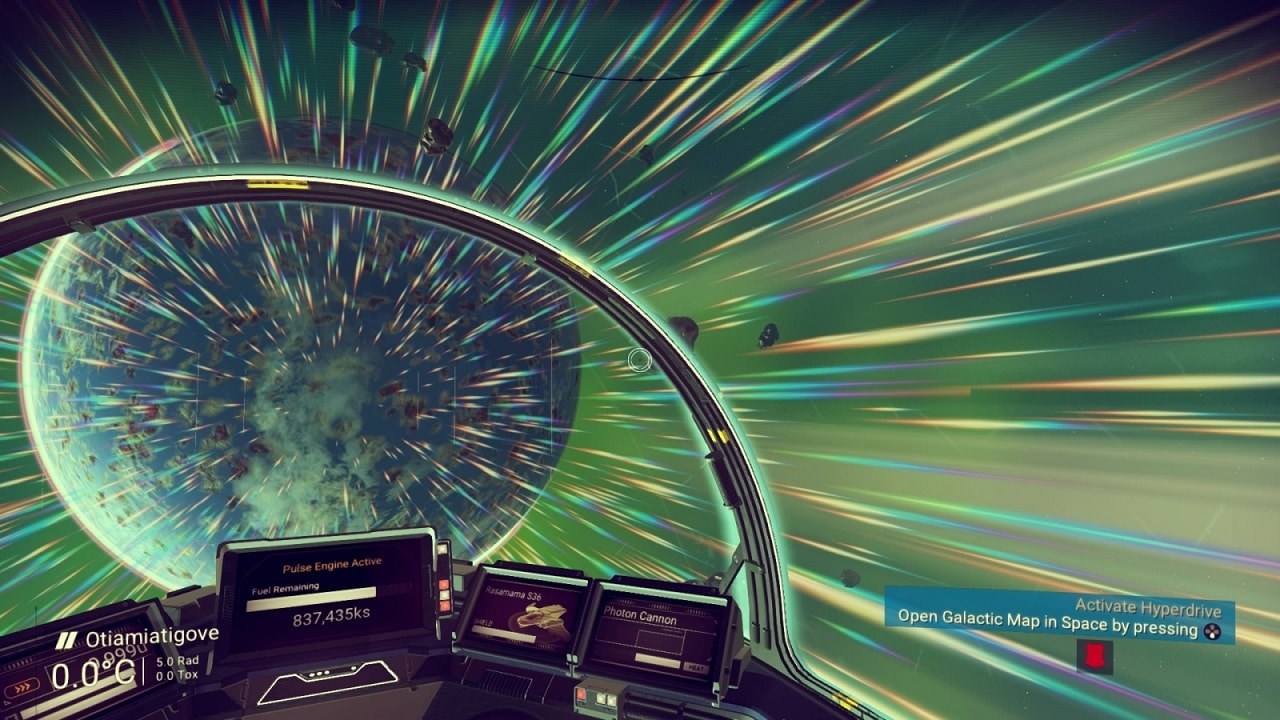
A few other methods could help make the jump to the deep beyond possible, too.
“There's speculative stuff about what you could do potentially to make life easier. Such as build spacecraft on the moon so you don't have to launch from Earth's gravity. So you can build your spacecraft in a sixth of Earth's gravity and maybe use the water on the moon – break it down to hydrogen and oxygen – and then you have your rocket fuel. There's a number of different reasons why you might not want to do all of the heavy lifting from Earth.”
And what about warp drives? Could we truly fold the fabric of space time to jump vast distances in an instant?
“Theoretically, you have the Alcubierre Drive. It is a genuine warp drive, theoretically,” clarifies Brendan.
“When we talk about warping, you're deforming something, and when we talk about warp drives you're deforming/warping space time.”
So this is the interstellar fold-a-piece-of-paper and punch a hole through it thing?
“It's more like surfing,” says Brendan.
“You drag the spacetime in front of you - like pulling on a car as its driving towards you. It's bringing your destination towards you. You have to warp the spacetime around you. The main problem is that you're accelerating quite fast. You're shifting everything quite close together so radiation you're carrying with you, just light in general when you're pushing through space and you're warping it, and compressing, you're getting shorter and shorter wavelengths - deadly radiation by the time you reach your destination. If the hyperdrive in No Man’s Sky was to work like that then you would arrive at your destination with, say, a gamma ray burst – the highest level of electromagnetic radiation, so you'd probably wipe out all life on the destination planet!”
Close Encounters with Alien Life
Providing you’ve not destroyed all life as you know it, you’d hope for contact with another sentient, alien life-form. The universe is so vast that minds as big and smart as Stephen Hawking’s believe that alien life is a certainty rather than possibility, and No Man’s Sky is full of outposts inhabited with intelligent life, ready to trade resources and share the secrets of their cultures.
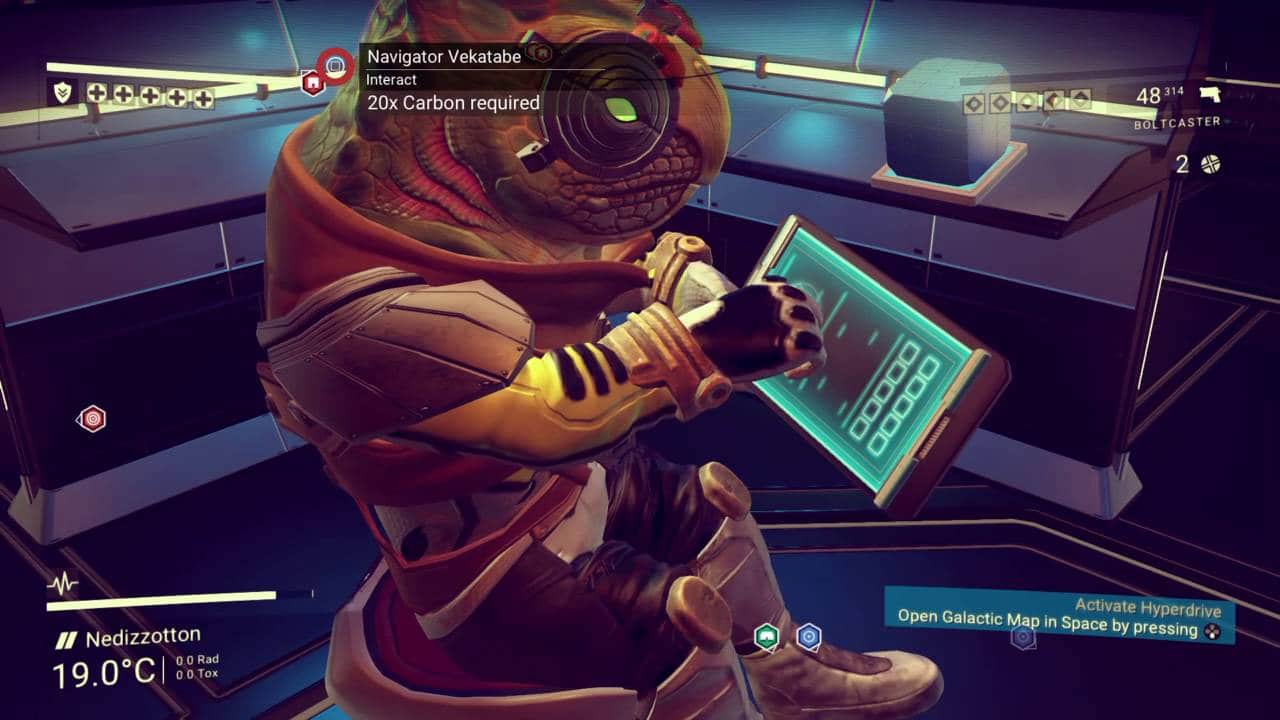
“The idea of how vast things are increases the chances of finding life,” says Brendan.
“The Milky Way Galaxy has between 200 and 400 billion stars and on average we reckon there's at least one planet per star. That's a really conservative estimate. And that's just our galaxy. And we reckon there's over 100,000,000,000 galaxies - and each one of those, with each having hundreds of billions of stars, there's a good chance of something out there, but incredibly distant.
“Astro-archaeology might be a big deal, too. One big factor is time: We've been around a couple of million years in our current form, the universe has been around about 13.8bn years. Civilizations have probably been and gone. So it would be interesting to see if they've left markers.”
Could we possibly communicate?
“To find something to communicate with at the same time, you need to be relatively close together or else your messages are going to take thousands, or millions or even billions of years to even find them in the first place. One of the big problems in the future is going to be dealing with that, even for our own communications with deep space, human astronauts.
“If we wanted to transmit messages, we've actually done it before. We've sent messages to other star systems, to a globular cluster of stars near our galaxy. The further away your signal goes, the weaker it gets. And also everything is in motion so you have to aim for where your target will be when your signal reaches it. It's a radio signal getting weaker and weaker, so you're expecting your aliens friends to be listening specifically for it.
“You could send up the equivalent of a global smoke signal, so either you have a large structure in the nearby vicinity, or alter the atmosphere so that it isn't natural, to indicate that there's some intelligence behind it. If we can think of something like that we expect an intelligent life-form to think of it as well.”
Reaching the Center of the Galaxy
The ultimate goal of No Man’s Sky is to reach the center of the galaxy, where the answer to a great mystery awaits. In our galaxy however, there’s not much mystery to what we’d find – and it could prove rather depressing.
“We kind of do know what's at the heart of the Milky Way and it'd be devastating if it was the same at the heart of No Man’s Sky, as we'd be sending everyone to their deaths!” laughs Brendan.
“There is a supermassive black hole at the center of our galaxy and the reason we know this is because we can see stars orbiting this invisible mass at the heart of our galaxy. We have about 12 years' worth of observations – enough to calculate the orbits of stars moving around, and say they are orbiting a black hole, and be able to say they would only take about 100 years to orbit around.
“We see these stars orbiting mass. Just as we apply Kepler's laws of motions and Newton's laws of gravitation to work out the mass of planets orbiting our sun – that's just a body orbiting a more massive body – we can use the movement of the stars around the black hole to work out the mass of the black hole at the center. There's the equivalent of the mass of four million times the mass of the sun concentrated in the heart of our galaxy in the form of that black hole, whatever that may be. Black holes are still a mystery - we can measure their mass, their spin, that's about it really.”
“There’s probably something like a black hole minefield towards the galactic center, which we can speculate on based on by the very old population of stars determined by their color composition. So before you reach the center of the galaxy there's quite a few medium to large black holes there as well. So it'll be interesting to see as people get closer to the galactic center of No Man’s Sky if anything like that has manifested.”
Does No Man's Sky Have Educational Value?
So, it’s a mixed bag of real science and fictional fun in No Man’s Sky. It’s clear that developers No Man’s Sky have respect for both. But is there any educational value in No Man’s Sky? Could you learn anything by playing it, or at least expand your understanding of the universe?
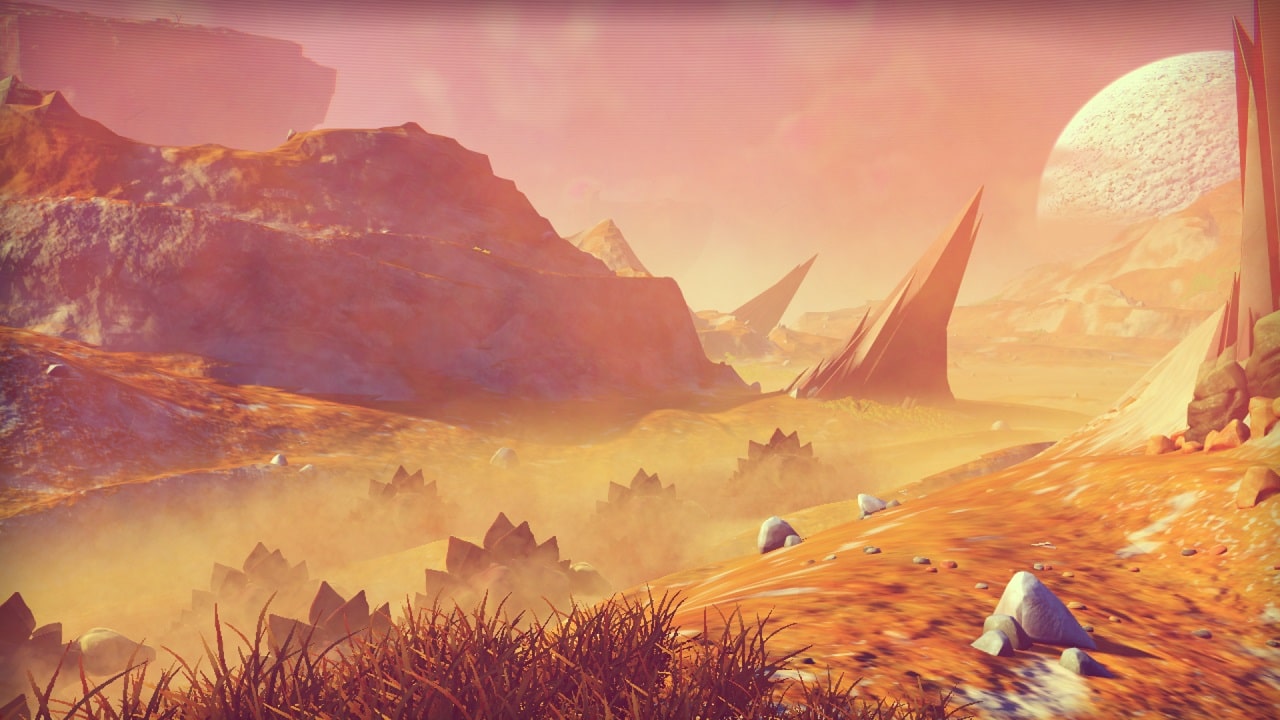
“It would definitely inspire interest,” concludes Brendan.
“Right now there might be a disconnect with things like exoplanets in real life. Start at the top level. It all sounds very exciting. Alien worlds, the stars – it’s quite romantic, quite inspiring to think there are planets orbiting those stars.
“I do think science fiction does drive exploration and science fact, breaching the limits of what we know already. So I think a game like this could help you connect to the fact there are whole worlds out there, eco-systems, the grand sense of scale. Whole different configurations of molecules we have not discovered before. That's a missing link, that would be something that is very beneficial in a game like this."

